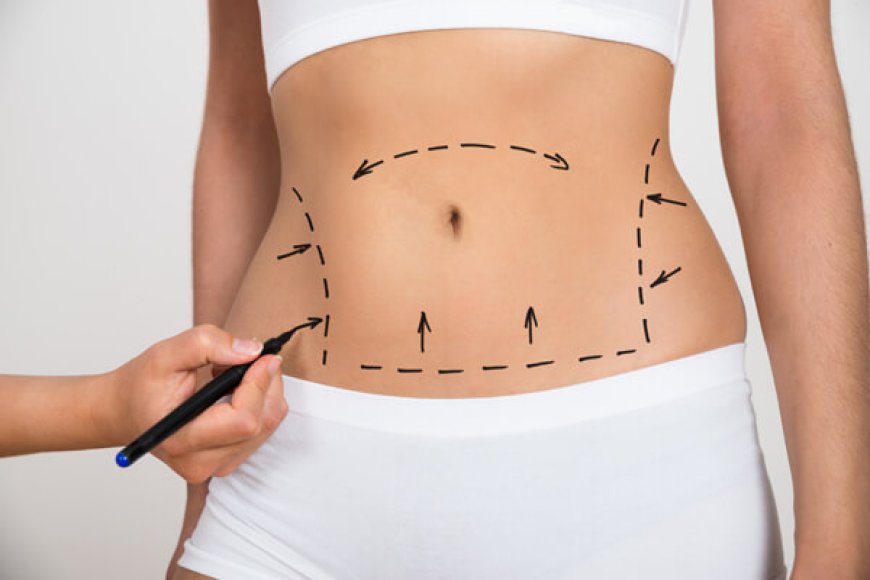Liposuction - Understanding the Facts
Liposuction is the evacuation of overabundance muscle versus fat by pull utilizing extraordinary careful hardware. A plastic specialist regularly performs the medical procedure. The fat layer of skin is situated in the subcutaneous layer of tissue called the hypodermis.

Introduction
Liposuction has become a go-to solution for individuals struggling with localized fat deposits that are resistant to diet and exercise. This article delves into the essentials of liposuction, shedding light on its procedures, benefits, risks, and other important considerations.
What is Liposuction?
Liposuction, also known as lipoplasty or body contouring surgery, involves the removal of excess fat from specific areas of the body to enhance aesthetic appearance and proportion.
History of Liposuction
The concept of Liposuction in Dubai dates back to the 1920s, evolving significantly over the decades with advancements in medical technology and surgical techniques.
Common Misconceptions About Liposuction
Many misconceptions surround liposuction, including beliefs about its effectiveness as a weight loss method and its ability to treat obesity.
Benefits of Liposuction
Improved Body Contour
Liposuction helps in achieving a more sculpted body contour by targeting areas such as the abdomen, thighs, hips, arms, and chin.
Boost in Confidence
Patients often experience a significant boost in self-confidence following successful liposuction, feeling more comfortable with their body shape.
Risks and Side Effects
Surgical Risks
Like any surgical procedure, liposuction carries risks such as infections, bleeding, and adverse reactions to anesthesia.
Post-Surgery Side Effects
Common side effects include swelling, bruising, and temporary numbness in the treated areas, which typically subside with time.
Types of Liposuction Procedures
Tumescent Liposuction
This technique involves injecting a large volume of saline solution mixed with anesthetic and adrenaline to facilitate fat removal.
Laser-Assisted Liposuction
Laser energy is used to liquefy fat cells before removal, which can make the procedure less invasive with reduced recovery times.
Ultrasound-Assisted Liposuction
Ultrasound waves are utilized to break down fat cells, making them easier to remove through suction.
Who is a Good Candidate for Liposuction?
Ideal candidates for liposuction are individuals who are close to their ideal body weight but have localized fat deposits that are resistant to diet and exercise.
Preparing for Liposuction Surgery
Consultation with a Surgeon
A thorough consultation with a board-certified plastic surgeon is essential to discuss expectations, risks, and surgical options.
Pre-operative Guidelines
Patients may need to adjust medications, stop smoking, and follow specific dietary guidelines before surgery to optimize outcomes.
What to Expect During Liposuction Surgery
Anesthesia Options
Liposuction can be performed under local anesthesia, intravenous sedation, or general anesthesia, depending on the extent of the procedure and patient preference.
Surgical Techniques
The surgeon makes small incisions near the targeted area, inserts a thin tube called a cannula to loosen excess fat, and uses suction to remove it.
Recovery and Aftercare Tips
Post-Operative Care
Following surgery, patients are advised to wear compression garments to minimize swelling and support the healing process.
Managing Discomfort and Swelling
Pain medication and ice packs can help alleviate discomfort and reduce swelling during the initial recovery phase.
Long-Term Results and Maintenance
Lifestyle Changes
Maintaining a healthy diet and regular exercise regimen is crucial to preserving the results of liposuction and preventing new fat deposits.
Follow-Up Visits
Regular follow-up visits with the surgeon allow for monitoring of healing progress and addressing any concerns.
Cost Considerations
The cost of liposuction varies based on factors such as the surgeon's expertise, location of the clinic, and extent of the procedure.
Alternatives to Liposuction
Non-Surgical Fat Reduction Techniques
Non-invasive options like cryolipolysis (CoolSculpting) and radiofrequency treatments offer alternatives to traditional liposuction with minimal downtime.
Diet and Exercise Plans
Healthy lifestyle choices including balanced nutrition and regular physical activity can help reduce body fat naturally.
Choosing the Right Surgeon and Clinic
Selecting a qualified plastic surgeon and accredited surgical facility is critical to ensuring safe and successful liposuction outcomes.
Conclusion
In conclusion, liposuction is an effective cosmetic procedure for contouring the body by removing localized fat deposits. While it offers significant benefits in enhancing body shape and boosting self-confidence, potential risks and considerations should be carefully evaluated with the guidance of a qualified professional.
